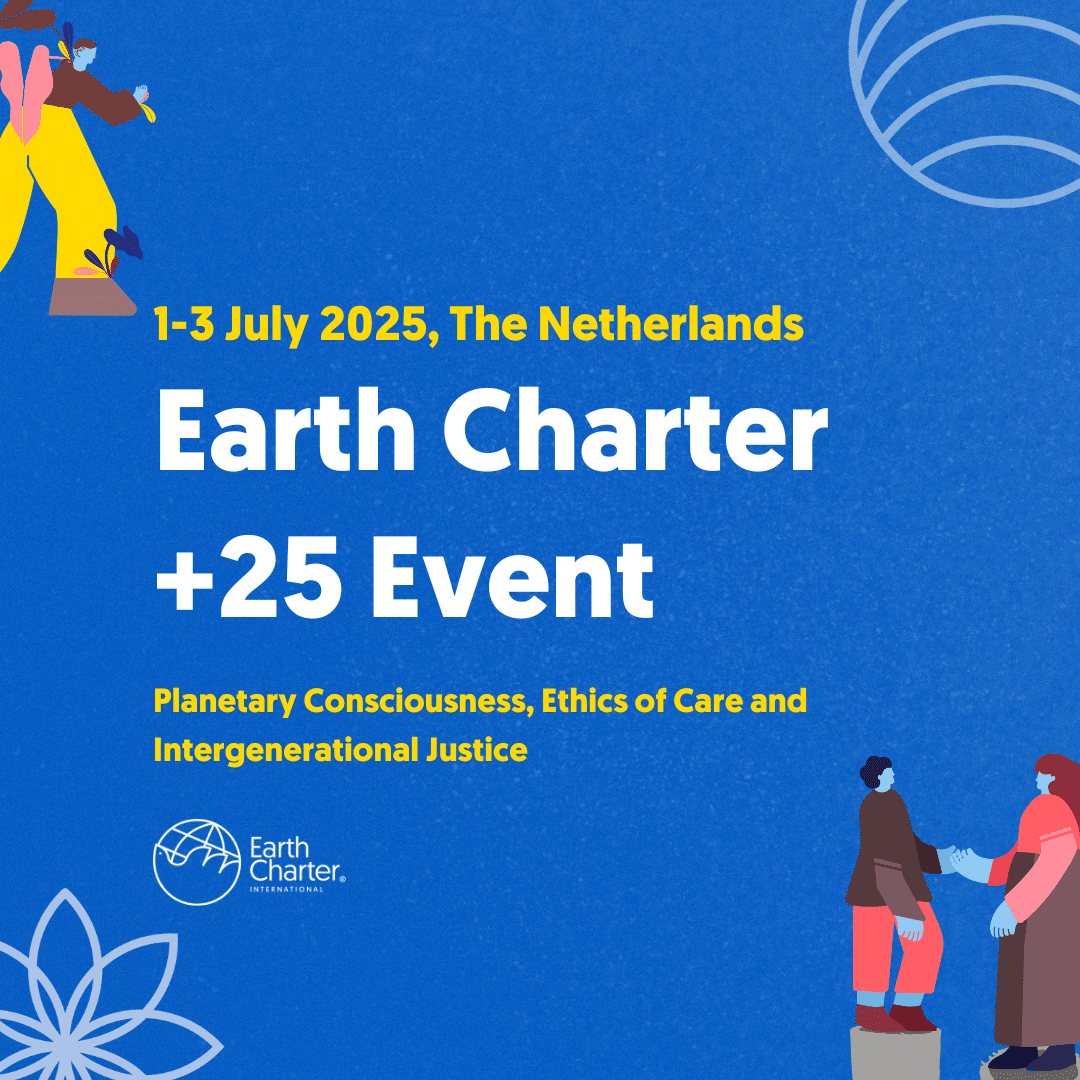Editor’s Note: We commissioned Jan Roberts, president of the Earth Charter Community Summits in the
Jan is now co-director, with Rick Clugston, of Earth Charter USA. As she notes herself, “Until the Earth Charter +5 conference in
The grassroots Earth Charter movement in the United State is undergoing changes. Growing a movement is like a marketing campaign. It depends on fresh, new messages and approaches to reach new people in order to build momentum. Rigidity creates stagnation. So five years after launching the Earth Charter in the
In 2001 the Earth Charter was launched in the
Since that time many initiatives have flowed from the summits. They include weaving the Earth Charter into lesson plans for public school schools, university graduate certificates and even a master’s degree program guided by Earth Charter; city endorsements and the launch of a quality of life indicators program using the Earth Charter; adoption and use by religious organizations and interfaith groups; use of the Earth Charter in mission statements for non-governmental organizations; countless initiatives like Earth Scouts for children and youth three to fifteen years of age and individual actions that continue to spread the word about the Earth Charter.
Although Earth Charter Community Summits were never intended to be ends on to themselves, that has been the outcome in many of the 50 cities in which summits have been held since 2001. The purpose of the summit has always been to spawn actions at the community level and in people’s personal lives. Unfortunately, cities have become so focused on the annual summits that when new people arrive to become engaged, they are directed towards summit planning. On the one hand, that is great, as the summits do bring visibility of the Earth Charter to the community and participants can then engage with it through personal actions or even larger initiatives. The problem is not everyone is interested in summit planning. Also there is no tracking or on-going support for self-motivated people after the summits.
Lessons from the Women’s Movement … and from Caterpillars
We are now developing other options, in addition to the Earth Charter Community Summits, for growing the movement. One option is modeled on the women’s movement, which began in the
A more recent metaphor for starting in small groups and linking them for transformational change is supplied by evolution biologist, Elizabeth Sahtouris:
The caterpillar is a voracious consumer that devotes its life to gorging itself on nature’s bounty. When it has had its fill, it fastens itself to a convenient twig and encloses itself in a chrysalis. Once snug inside, crisis strikes as the structures of its cellular tissue begin to dissolve into an organic soup.
Yet guided by some deep inner wisdom, a number of organizer cells begin to rush around gathering other cells to form imaginal buds, new and initially independent multicellular structures that begin to give form to the organs of a new creature. Correctly perceiving a threat to the old order, but misdiagnosing the source, the caterpillar’s still intact immune system attributes the threat to the imaginal buds and attacks them as alien intruders.
The imaginal buds prevail by linking up with one another in a cooperative effort that brings forth a new being of great beauty, wondrous possibilities, and little identifiable resemblance to its progenitor. In its rebirth, the monarch butterfly lives lightly on the earth, serves the regeneration of life as a pollinator, and is capable of migrating for thousands of miles to experience life’s possibilities in ways the earthbound caterpillar could not imagine.
I was struck with the words “organizer cells,” and I began to think about breaking down our approach in communities to smaller units more like the “organizer cells” described by Sahtouris. Thinking again about the Women’s Movement, I considered small groups of people coming together, sharing stories of the disconnection and self-interest that our over-emphasis on individualism has wrought, getting validated as interdependent beings as reflected in the Earth Charter, and being supported as they move out into their circles of connection to educate and engage themselves and others with the Earth Charter.
This idea has struck a positive chord in many of the
To assure that the small at-home groups feel part of a larger movement, we are using technology and the Earth Charter Community Summits to link the groups together. There is computer software for linking “classes” that we are experimenting with, so groups within each community can connect each quarter to share their progress. The Summits will not only have as a goal to inspire newcomers, but also serve as a networking function for groups already in process. The summit cities will continue to be linked electronically to reinforce the national connection. Naturally, socializing over good food, wine and other beverages will be part of the gatherings. Our experience has been that “breaking bread” together is important to fostering connection.
Of Scouts and Indicators
There are two initiatives that continue to be priorities for funding and actions in order to grow them nationally. Earth Scouts recently developed an Earth Scouts Leadership Guide, and the Earth Charter Community Indicators project continues to build partnerships and funding for an effective launch in early 2006.
The Earth Scouts Guide is based on a cooperative learning environment that empowers children and youth to take active roles in leading Earth Scout activities. It is written in a conversational and helpful style, so both adults and youth will find it easy and enjoyable to use. You are able to download the guide from www.EarthScouts.org
Laying the groundwork for the Earth Charter Community Indicators has taken two years, so we definitely can’t be blamed for rushing the process. One reason for the slow going has been getting funds, but the other even more problematic one has been building political support for the project from “both sides of the aisle” as we say in the
Earth Charter Communities USA is the organization that guides and supports the grassroots movement in the
Another key issue is fundraising for the national office and local activities around the country. Recently, we started a new program, Earth Charter Ecological Services, to develop financial resources in alignment with Earth Charter principles. Our first contract is as administrator for recycling laser inkjets and cell phones for the Association of Healthy Hospitals in the
As ECCUSA looks towards the future, we feel hopeful. The annual invitational retreat for organizers is being expanded into a training conference for Earth Charter volunteers next year. The Board of Directors is dedicating itself to strengthening the infrastructure for our national office. The growth of the grassroots movement is showing great promise with the addition of an active Internet campaign, the use of the Earth Chartering Guide to make it easier for ordinary folks to involve themselves and their friends, the official launch of the Earth Scouts, the creation of a template for Earth Charter Community Indicators and a renewed emphasis on bringing the Earth Charter into the Arts community.







